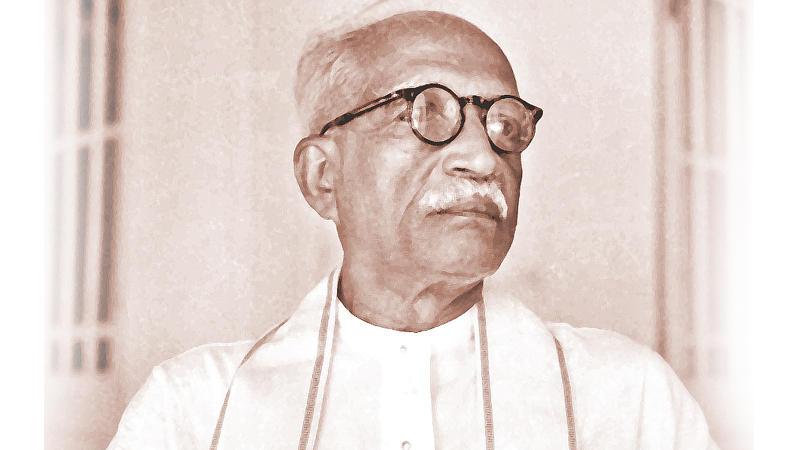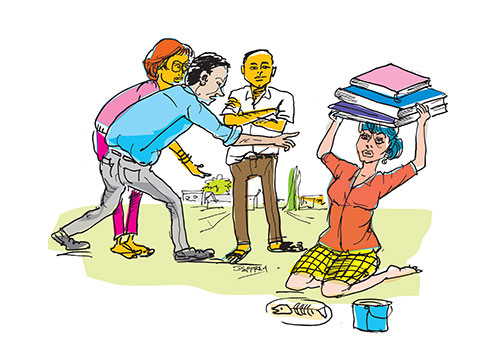By Sudesh Mantillake
This article discusses the idea of neurodiversity as a point of departure towards imagining our education to be more inclusive. First, I talk about neurodiversity, the autism spectrum, and the challenges for inclusive education in Sri Lanka and then examine the limitations of the current Quality Assurance process to ensure an inclusive education for students at Sri Lankan universities.
In Sri Lanka, we are familiar with terms like “cultural diversity” and “bio-diversity” but not as much with “neurodiversity.” In public events, when we say, “we celebrate cultural diversity,” we acknowledge that we are a multicultural society and accommodate diverse cultures in our society. Like cultural diversity, neurodiversity acknowledges the diversity in how our brains are neurologically connected and function, making us experience and engage with the world in different ways. For example, when people make jokes with double meanings, some take the words’ literal meaning and not the symbolic meaning. If an individual always understands words literally (not hidden or symbolic meaning), this may signal a neurological condition. For example, Elisabeth Wiklander, who identifies as autistic, is a neurodiversity advocate and a prize-winning cellist with the London Philharmonic Orchestra. In a TED Talk, Elisabeth claims that she has a very literal mind that constantly clashes with non-verbal and verbal subtleties in social situations. She says, “Jokes and sarcasm fly completely over my head. My mind just takes things in so literally. It loves to analyze everything. My world is a very intense one.” Elisabeth asserts that autism influences her thoughts, imagination, senses, emotions, and how she processes information.
However, since most of society experiences and engages with the world in a particular way, that becomes the “norm” or the dominant societal standard, termed “neurotypicality.” “Neurotypical” individuals think and process information in ways typical within the majority and the dominant culture. Their brains function and process information in the “usual” manner expected by most of society. The normalization of the dominant standard poses a huge challenge for people in different places in the spectrum of neurological differences. Therefore, “neurodiversity” has emerged as a global human rights and social justice movement since the 1990s to promote equality and inclusion of “neurological minorities.”
Autism and Education in Sri Lanka
Although the term neurodiversity refers to the diversity of all people, it is often used in the context of autism spectrum disorder (ASD) and learning disabilities. ASD is a neurological and developmental disorder that affects how people interact with others, communicate, learn, and behave. In 2017, the prevalence of ASD in Sri Lanka was estimated to be 1.07%. This means that whether identified as such or not, many of us, our family members, and friends might be on the autism spectrum.
Dennis Mombauer, a researcher and writer who works with SLYCAN Trust, a non-profit think tank in Colombo, is concerned about ASD and education in Sri Lanka. In an article titled Autism in Sri Lanka: Awareness and Acceptance, he ends, “Tens or hundreds of thousands of people will be affected by autism from infancy through adulthood and onto old age, and they need to be accepted for what and how they are. Society as a whole—not only parents, not only doctors and teachers—needs to integrate autistic people and respect their differences from the “neurotypical” majority: it needs to listen to their voices, understand their experiences, and create an environment where they can thrive together with everyone else throughout their lives.” Nimisha Muttiah, a Senior Lecturer with the Department of Disability Studies, University of Kelaniya, in an article titled, Autism Spectrum Disorders (ASD) in Sri Lanka – Status quo and Future Directions shows the highly problematic condition of young people with ASD in Sri Lanka, including how they are deprived of their education. The Ministry of Education states that a significant challenge it faces in accommodating neurologically diverse students is the lack of trained teachers.
Is Quality Assurance the answer?
One of the ways Sri Lanka could accommodate the needs of diverse children and young people is to develop an inclusive education system. According to UNICEF, inclusive education is an education system that is inclusive of all students and welcomes and supports them in learning, whoever they are and whatever their abilities or requirements are. Why is our education system not inclusive? People will have different takes on this question. Lack of awareness of discourses like neurodiversity and inclusive education may contribute to our current situation. However, there is no genuine interest, empathy, or political commitment to inclusive education at the policy level. Successive governments, ministers, administrators, professors, lecturers, teachers, and students have generally hailed neurotypicality and, for the most part, remained silent on this issue.
The Quality Assurance (QA) process at our universities is presented as a mechanism to ensure the quality of Sri Lankan higher education institutions (HEI) in accordance with international standards. In theory, this sounds progressive, but does the current QA process accommodate neurodiversity and inclusive education in practice? Although in QA manuals, we find expressions like “provide equal opportunities for students with special needs” and “provide resources and services for students with special needs,” very little is done beyond developing policies on disability at the university/faculty level. The Ministry of Higher Education barely allocates funds to run public universities, much less for advancing inclusive education. Ahilan Kadirgamar elaborated in his recent Kuppi article (21.11.2023) that state funding for universities has come down to 0.25% of GDP. In such a situation, how can we develop infrastructure and recruit trained staff for inclusive education? The QA process should guarantee funds for inclusive education.
Without genuine interest, action, and commitment to diversity, policies are just decorations. When are we going to take action to accommodate neurodiversity in our education system? The Ministry of Higher Education and university administrations often do not even accommodate more visible cultural diversity and ignore the country’s constitutionally imposed language policies. Can we expect acknowledgement of neurodiversity when the ministry and university administrations seem to overlook cultural diversity within its own staff? In October 2023, the Higher Education Division of the Ministry of Education circulated an official letter in Sinhala titled, “Regarding Applying for Foreign Study Leave by University Academics through the Online System” (my translation). Several non-Sinhala speaking/Tamil-speaking academics of the Faculty of Arts, University of Peradeniya, where I teach, raised questions about the absence of a Tamil translation. According to the Constitution of Sri Lanka, both Sinhala and Tamil languages are recognized as national and official languages. Government administrators should ensure that Tamil-speaking citizens receive a Tamil translation if the original document is in Sinhala. Perhaps the Ministry would have forwarded English or Tamil translations to universities in the North and East. If so, how about the Tamil-speaking academics in universities in the South? Unfortunately, QA processes fail to allocate resources or set mechanisms to respect and be inclusive of more visible cultural diversity, let alone neurodiversity.
The current QA process encourages us to produce evidence in paper rather than genuinely identify root causes of issues in the higher education sector. The QA should not be only about producing ‘evidence’ that universities adhere to specified standards. In the current Manual for Institutional Review of Sri Lankan Universities and Higher Education Institutions, standard 4.9 specifies “University/HEI has policies and mechanisms to ensure that teaching-learning and assessment strategies provide equal opportunities for students with special needs.” In the same manual, standard 5.7 says, “The University/HEI provides appropriate learning resources, academic support services, delivery strategies, guidance, and infrastructure facilities to meet the needs of students with special needs.” Although our universities produce documented evidence that they adhere to these standards and at times even get an “A” grade following QA review, in reality, students with disabilities face enormous challenges in our universities. Erandika de Silva’s Kuppi article on 10.10.2023 depicts the pathetic circumstances under which students with disabilities learn in our universities. We do not even know about the experience of neurologically diverse students with less visible learning difficulties.
I cannot help but recall the Sinhala saying from a folktale that goes, “lĕḍā mal̤at baḍa suddayi” (the stomach is clean (now) even if the patient is dead) when I see the efforts of QA processes in Sri Lankan universities. If we continue in the current QA trajectory, in the end, after institutional and programme review, we will have to say, “The stomach is clean (now) even if the patient is dead.” What is the purpose of an “A” grade from these reviews if our university is non-functional or dead? We need to safeguard our universities and ensure that they are inclusive educational spaces for neurologically diverse people.



